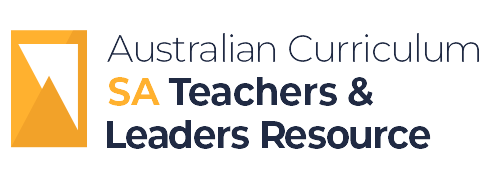Our learners’ context
Professor Martin Westwell presents current educational theories and positions around learning and the place South Australian education holds in the national and international context.
Highlights
Transition to post-industrial education
Video (4.47 mins)
Professor Martin Westwell summarises Head of the Innovation and Measuring Progress Division – OECD/CERI, Dirk Van Damme’s research into the progress made thus far in our shift from an industrial to a post-industrial model of education.
Taking action
Video (2.37 mins)
Everyone agrees with Ken Robinson’s ‘Changing educational paradigms’ animation but we need to incorporate this into our practice and policies. Professor Martin Westwell describes some of Bangladesh’s enormous educational challenges and how action is taken to meet these challenges.
Predictors of university success
Video (5.07 mins)
Professor Martin Westwell outlines a review of over 7000 articles that details research about what it is about what students do at school that predicts their university success. Student self-efficacy has the most positive effect while surface approach to learning has an extremely negative effect.
Complete presentation
Clip 1: Transition to post-industrial education
Video (16.36 mins)
Professor Martin Westwell summarises Head of the Innovation and Measuring Progress Division – OECD/CERI, Dirk Van Damme’s research into the progress made thus far in our shift from an industrial to a post-industrial model of education. He outlines a review of over 7000 articles that details research about what it is about what students do at school that predicts their university success. Martin also shares compelling research into students who left school with no qualifications; that when they have high levels of self-directedness in their learning it leads to career promotion irrespective of their lack of formal qualifications.
Clip 2: Pedagogy of success for all
Video (11.41 mins)
Professor Martin Westwell uses mathematics learning as an example to illustrate why it is important to focus on the ‘big why’ of learning. When we take the mathematics specific words out of the mathematics proficiencies we see the ‘big why’ of learning as distilled in the ‘Adding it up report’ which underpins the Australian Curriculum and talks about five strands for being an effective learner.
Clip 3: Relational learning and risk taking
Video (12.55 mins)
When we design learning that involves students in the proficiencies of understanding, problem solving and reasoning we provide them with spectacular opportunities for learning through failure. For example the quality of the feedback we can provide transforms the learning into powerful learning. Also when we design learning that requires students to make their own connections and multiple entry points to the big idea, they derive real meaning from it. This is the true definition of personalised learning.
Clip 4: Problem solving
Video (21.25 mins)
We need to ‘Dan Meyer’ our existing mathematics resources to superimpose the strategic intent of the Australian Curriculum upon them and ensure that the essence of the learning area comes through in the learning activities.
In NAPLAN numeracy problem solving questions, it can be difficult for students to get the correct answer even when they know the mathematical processes, because of their inexperience with thinking through the problem. Rich problem solving opportunities are presented in more complex NAPLAN questions and we can use these to design learning for our students.
Clip 5: Assessment
Video (4.49 mins)
NAPLAN problem solving questions are rich questions that we can use to design learning around for our students. In the SACE, what is being assessed is their understanding and their problem solving too. So as leaders we need to drive the learning more towards this kind of learning. It not only honours our educational values but also improves NAPLAN scores and SACE outcomes.
Activities
Activity 1: Worksheet or prove it?
Video (3.59 mins)
Participants complete two activities about perimeter. The first is a worksheet and the second is a ‘prove it’ activity. Martin asks participants to think about their thinking while they are doing each of the activities.
Activity 2: What’s the purpose of maths education?
Video (2.30 mins)
Participants record as many reasons that they can think of for the purpose of mathematics education. Then they share their ideas.
Activity 3: NAPLAN questions & achievement standards, fluency or fluency plus?
Video (2.53 mins)
Participants examine a range of NAPLAN questions and discuss at their tables which of the questions is ‘fluency’ or ‘fluency plus’. The process is repeated with the mathematics achievement standards at the end of the clip.
